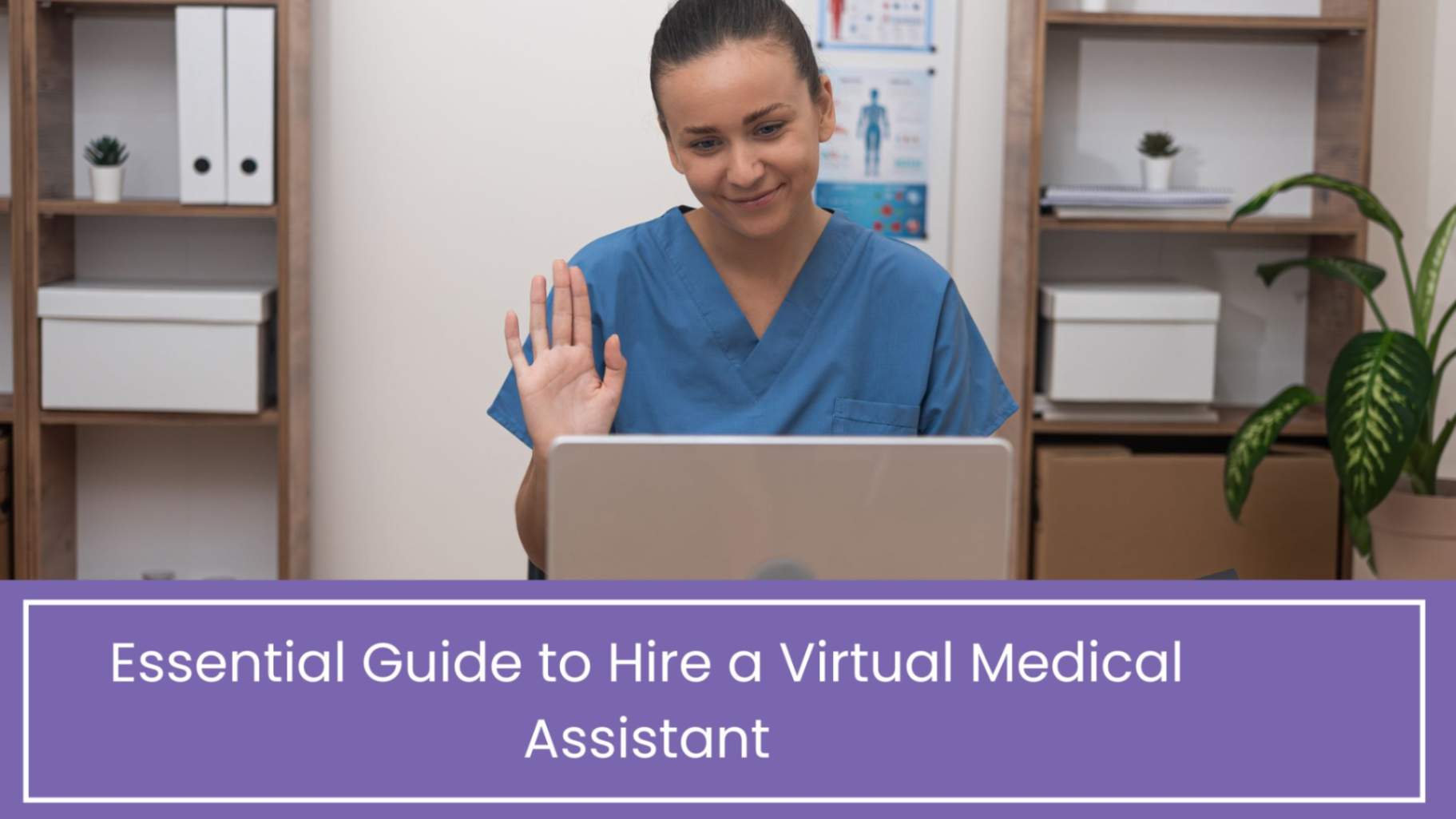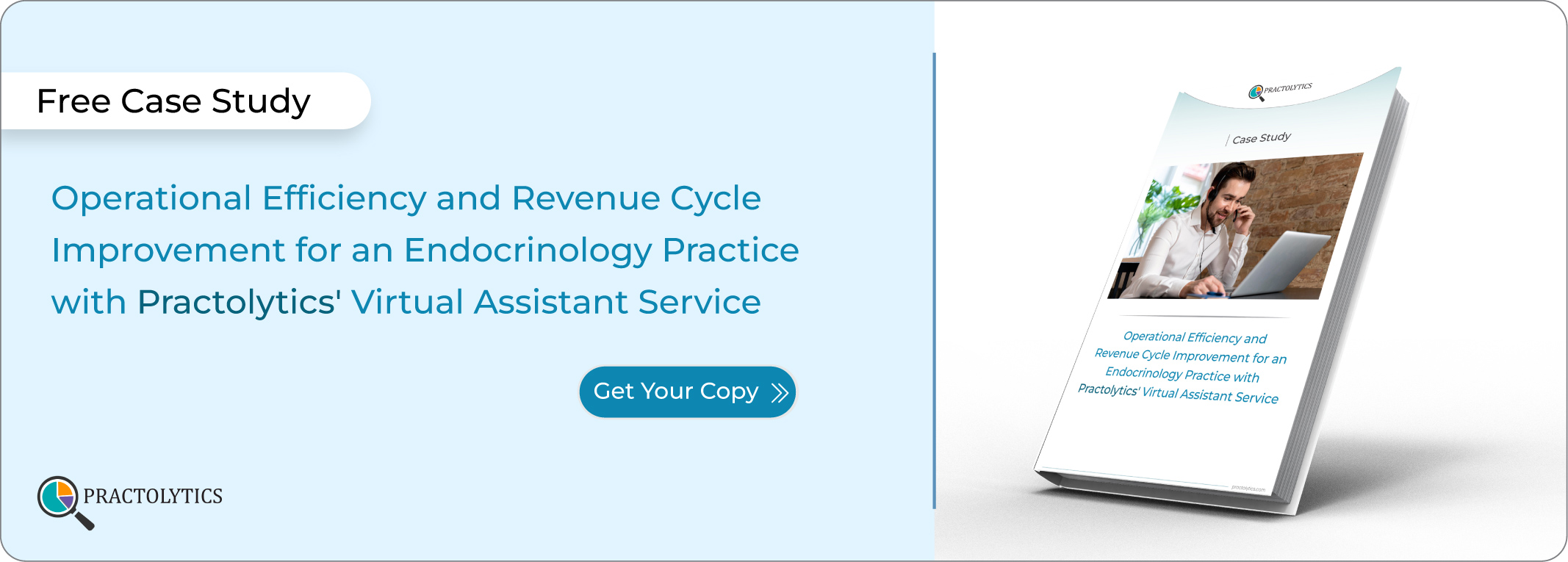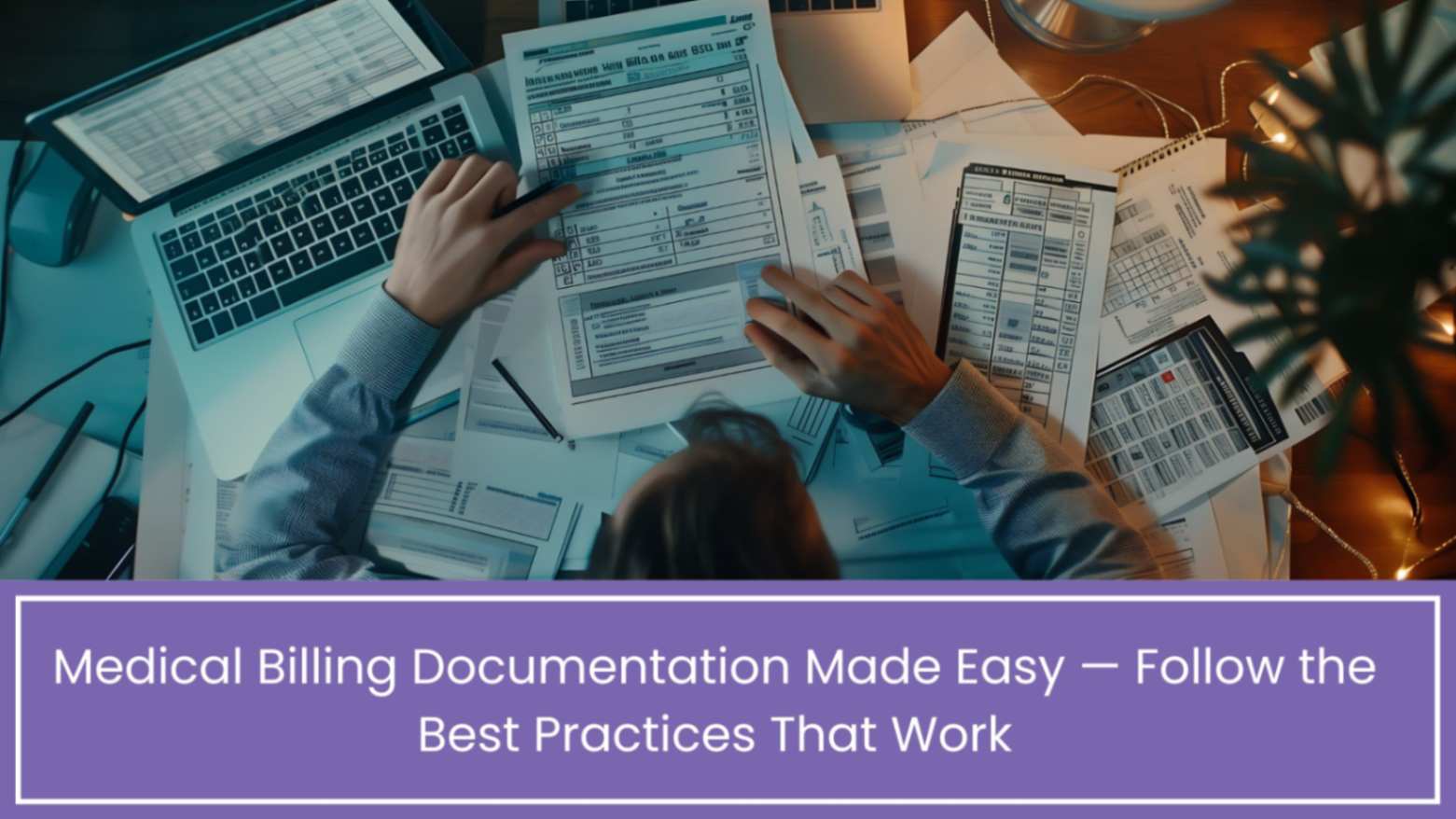Essential Guide to Hire a Virtual Medical Assistant
A Virtual Medical Assistant (VMA) is someone trained to work remotely and fulfil many administrative duties for your clinic. In practice, an essential guide to hire a virtual Medical Assistant might schedule and confirm appointments, answer patient phone calls or emails, follow up on lab results, check insurance eligibility, update your electronic medical records (EHR), and even assist with billing tasks. They become part of your “virtual” front or back office – you don’t need to give them office space, but they still handle crucial tasks. This support is especially valuable because it lets medical staff concentrate on what they do best: caring for patients. In short, a good remote healthcare assistant lifts a huge burden off your team by taking over routine work, so your practice can run more efficiently and patients are better served.
Table of Contents
Benefits of Hiring a Virtual Medical Assistant Companies
Virtual Medical Assistants bring many advantages:
- Cost savings: VMAs work on an hourly or project basis, so you save the overhead of a full-time hire. There’s no need to pay salary, benefits, or provide office space . In fact, hiring a VMA is often much less expensive than taking on another in-house employee.
- Administrative relief: They handle the day-to-day paperwork that often clogs a practice. VMAs can answer phones, book appointments, file claims, enter data, and more . By offloading these tasks, your doctors and staff have more time for patients. Studies show doctors spend twice as much time on admin work as on patient care; giving those chores to a VMA “relieves [s] the pressure on your internal teams” and helps lower burnout.
- Better patient communication: VMAs can improve your patient experience by providing prompt responses. They might confirm appointments and send reminders (leading to fewer no-shows) , call patients with lab results, or email educational material. A VMA is like a 24/7 customer service rep for your clinic. One report notes that patients feel more taken care of when a remote assistant addresses inquiries “promptly and professionally so that [patients] never feel ignored” .
- Increased efficiency: With a VMA handling routine, follow-ups (such as insurance claims and billing), your practice runs more smoothly. Offices using VMAs have seen real results – for example, one survey found a 22% drop in missed appointments and a 30% faster payment turnaround. In other words, claims get processed quicker, patient schedules stay on track, and your staff can focus on clinical work. One busy practice even reported saving over 10 hours of admin work per week thanks to medical assistants.
Overall, hiring a Virtual Medical Assistant can be a smart investment. You cut costs and stress at the same time, freeing up more time to care for patients.
When to Hire a Virtual Medical Assistant
How do you know if your practice is ready for a VMA? Look for these signs:
- Overloaded staff: If you or your front desk team are regularly working late, skipping breaks to handle calls, or feeling constantly behind on paperwork, it might be time. (Remember: physicians spend roughly twice as much time on admin as on patient care . If that rings true for your clinic, a VMA can help rebalance your workload.)
- Billing problems: Frequent claim denials, billing errors, or very long reimbursement cycles are red flags. These issues often mean your team is stretched too thin in coding and follow-up. Without enough time to double-check claims, mistakes creep in and claims stall – a VMA trained in billing and coding can clear those backlogs.
- Burnout or turnover: When your staff report feeling overwhelmed by non-clinical tasks, productivity and morale suffer. Practices that added VMAs noted large drops in work stress and administrative hours. If your team is burning out on data entry and scheduling, bringing in a remote assistant can reduce errors and improve job satisfaction.
- Patient delays or complaints: If patient calls and messages are going unanswered, or if you have long waits for follow-ups (prescription refills, test results, etc.), a VMA can help keep communication timely. They can answer routine calls and clear the backlog so patients feel cared for instead of forgotten.
- Growth plans: Are you expanding your practice with new providers, locations, or services? A VMA scales easily. Rather than hiring multiple new front-desk hires, you can bring on remote help quickly to cover growing administrative needs.
If you check several of these boxes, it’s a strong indicator that a VMA could make a big difference.
How to Hire a Virtual Medical Assistants
Following a clear process will help you find the right person:
- Assess your needs. Write down exactly what tasks you want the Virtual Medical Assistant Services to handle. Do you need help only 10 hours a week or 40? Is it primarily scheduling and calls, or also billing and charts? Knowing your priorities (for example, filling open slots in your schedule or cleaning up billing) will guide the rest of the process.
- Create a detailed job description. List the duties, required hours, and any needed skills. Be specific: for example, you might state “Experience with [Your EHR system] required,” or “HIPAA training preferred.” Practolytics recommends even asking for a HIPAA certification or proof of privacy training to show the candidate understands data security. Mention if telehealth support or phone follow-ups are part of the job.
- Search or interview candidates. You can find VMAs through specialised agencies, platforms, or through referrals. When interviewing, present a realistic scenario to test their skills. For instance, role-play a patient phone call and see how they respond. Ask about medical terms and workflows – even if they aren’t a clinician, they should handle basic terminology. You can also quiz them on tech skills (a quick test in your EHR or scheduling software is fine). Through this process, look for strong communicators who are friendly and clear.
- Verify credentials and compliance. Check references carefully. Confirm they have relevant healthcare experience or training in medical office work. Make sure they understand HIPAA and sign a confidentiality agreement. Practolytics notes that setting up secure technology is important, so ensure you have encrypted email or telehealth platforms in place. Explain to your existing staff how the VMA will communicate with them so there’s no confusion.
- Onboard and train. Even the best VA needs some orientation. Grant them access to necessary systems, and give a quick tutorial on your protocols (for example, how you document in the EHR or what your scheduling preferences are). Start with a short trial period or specific projects to let them prove themselves. Schedule regular check-ins (daily at first, then weekly) to answer questions and adjust workflow.
By breaking it down into these steps, you’ll bring on a VMA smoothly. In particular, keep communication open: define clear roles from the start to avoid overlap or gaps. (Practolytics stresses that providers should “define everyone’s job duties clearly” when adding virtual help .) With the right prep, your new VMA will be a reliable partner in no time.
Qualities to Look for in a Virtual Healthcare Assistant
When you review candidates, look for these key traits:
- Strong medical background: The candidate doesn’t need to be a nurse, but they should know medical terms and clinic workflows. For example, they should be comfortable with things like insurance CPT codes, prescription refills, or the typical flow of a patient visit. As one hiring guide notes, “even the simplest tasks cannot be done properly without good medical knowledge” in healthcare. Having at least a year of experience in a medical office or related training (e.g. a former medical assistant) is a plus.
- Excellent communication: Your VMA will be the voice on the phone and the pen on the notes. They should be articulate, friendly, and empathetic. They must be able to clearly understand and convey medical instructions or lab results to patients, and to relay information to doctors without missing details. Outsourcing experts stress that healthcare VAs need solid communication skills to ensure nothing is lost in translation. (One test: have them explain a billing process or a patient message back to you, and see if it’s clear.)
- Reliability and professionalism: Dependability is non-negotiable. Your best virtual medical assistants must be on time, punctual with deadlines, and consistent. They should demonstrate honesty and a professional attitude, since you’ll be trusting them with confidential work. As one guide puts it, a top healthcare VA is “careful to stay true to their commitment to being on time, be dependable consistently, and complete jobs with excellence”. Check references and past work to ensure they have a track record of meeting expectations.
- Tech-savviness: This is crucial. A Virtual health assistant lives online, so they need to navigate multiple digital tools easily. For instance, they may join video calls with patients or staff, so comfort with virtual meeting software is important. They should also already know or be quick to learn your EHR and billing software. One hiring tip notes that if a VA “is not technically savvy, they will have a very hard time” communicating and doing the job. During interviews, ask about their internet setup and test them on basic computer tasks.
- HIPAA compliance: Since they’ll handle patient data, make sure candidates are trained in privacy rules. Ask about HIPAA specifically and verify their understanding of confidentiality. As noted earlier, someone with HIPAA certification or documented training is ideal. Practolytics puts privacy first – all their VMA candidates are fully trained in HIPAA regulations. This attention to security helps you avoid costly violations.
In summary, a great VMA combines healthcare knowledge with clear communication and responsible professionalism. If someone checks these boxes, they’ll likely be a productive member of your team, even from afar.
Potential Challenges and How to Avoid Them
Hiring anyone, especially remotely, brings some challenges. A few you might encounter:
- Data security and privacy: Giving remote access to patient data requires caution. Avoidance tip: Only work with HIPAA-trained assistants and use secure, encrypted tools (for example, HIPAA-compliant email and video platforms). Practolytics recommends “select[ing] secure technology that safeguards patient information” . Make sure your VMA signs a confidentiality agreement and only gets access on a “need-to-know” basis.
- Unclear roles: If it isn’t clear who does what, tasks can slip through the cracks. Avoidance tip: From day one, define who handles each process. For example, write down “VMA will handle billing follow-up and reminder calls, in-house staff will handle in-person check-in and patient education,” etc. This clarity prevents overlap and frustration. (Practolytics specifically advises defining everyone’s duties to keep things running smoothly .)
- Tech hiccups: New systems can create hiccups. Avoidance tip: Test all tools before going live. Onboard your VMA with a dummy account or a training system so you can iron out any issues (like login problems or connection lags). Ensure they have a reliable internet connection and know how to use your patient portal or EHR.
- Communication gaps: Distance can lead to misunderstandings. Avoidance tip: Schedule regular check-ins (even a daily phone huddle or chat message) so nothing gets lost. Use clear messaging – for example, text or email a list of tasks and confirm it’s understood. Over-communicate at first; it quickly becomes routine.
- Workload balance: It can be tricky to initially gauge how much work to give a VMA. Avoidance tip: Start with a pilot phase. Maybe assign a few core tasks first, then gradually add more. If they’re underworked, you can always expand their role; if they seem overloaded, you can adjust. This flexible start-up approach prevents wasted hours on either side.
By anticipating these issues, you’ll be better prepared. Remember that many clinics make the switch successfully – the key is planning and clear processes. A bit of extra onboarding time will pay off as the VMA becomes a smooth extension of your team.
How Practolytics Can Help?
Are you searching for the top virtual medical assistant companies? Practolytics can assist. They specialise in healthcare, so they understand medical workflows. In fact, their website highlights that their VMAs are part of an “integrated team of experts” who know everything from scheduling to billing. Rather than hiring one general assistant, you get support tailored to your specialty (for example, dermatology, cardiology, or family medicine).
Practolytics takes HIPAA and security seriously. All their assistants are trained in privacy protocols and work with encrypted systems, so patient data stays safe. As they put it, their service is “HIPAA-compliant to the core – because patient privacy is non-negotiable”. When you partner with Practolytics, you can also tap into their technology: they use secure messaging and audit protocols to give you peace of mind.
They also emphasize working closely with your practice. Rather than just dropping off a list of tasks, Practolytics “partners with you to optimise every aspect of your practice” . For example, their VMAs don’t just do individual tasks in isolation – they help streamline whole processes like revenue cycle or telehealth coordination. You’ll even get reporting on performance: speedy payments, tailored reports, and around-the-clock support are part of what they advertise. In essence, Practolytics aims to be a full “productivity partner” for your clinic, letting you offload the headache of admin and focus on care.
In practical terms, working with them means you can start quickly (they offer free demos) and scale as needed. If your practice grows or slows, you can adjust the level of support. And since their team already knows many healthcare systems, you’ll spend less time on training. All this support lets you feel confident that the VMA role will succeed long-term.
Final Thoughts:
Hiring a Virtual Medical Assistant is a significant step, but it can bring substantial benefits in terms of time, money, and sanity. If your staff is spending too many evenings on paperwork or you’re worried patients aren’t getting timely responses, a remote healthcare assistant could be the solution. Start by thinking through what tasks you’d delegate, then follow a clear process to find the right person.
Practolytics and other virtual medical assistant providers exist to make this process smoother – they match you with qualified assistants and help ensure the transition is seamless. With the right approach, you can have your own reliable, virtual helper in place soon. Taking that next step could mean your clinic finally has enough support behind the scenes so that you and your team can spend more quality time with patients. It’s worth exploring – a small upfront effort could free up many future hours for care. Good luck on your search for the perfect healthcare Virtual Assistant!
Read More – From Chaos to Efficiency: A Small Practice’s Journey with a Virtual Assistant






